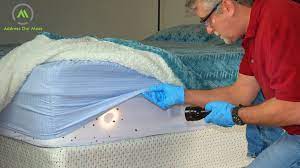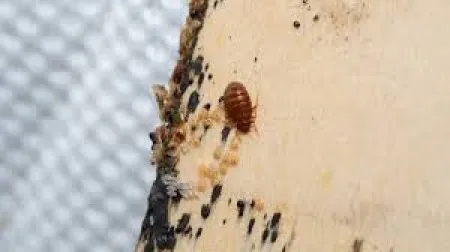These tiny, elusive insects feed on human blood and can cause itching, rashes, and even allergic reactions. Their presence can disrupt sleep and lead to a myriad of psychological effects due to the constant worry and discomfort. Effective bed bug removal requires a thorough understanding of their behavior, the symptoms of an infestation, and the most effective methods for eradication.

Understanding Bed Bugs
Bed bugs are small, reddish-brown insects that are about the size of an apple seed. They are nocturnal, making them hard to spot during the day, and their flat bodies allow them to hide in tiny crevices. Adult bed bugs can survive several months without feeding, which makes them particularly challenging to eradicate once they've infested an area.
Signs of Infestation
Identifying a bed bug infestation early can prevent a minor issue from becoming a full-blown problem. Common signs include:
- Bites: Bed bug bites are often red, itchy welts that can appear in clusters or lines on the skin.
- Fecal Stains: Small, dark spots on sheets, mattresses, or nearby furniture are a result of bed bugs' excrement.
- Blood Stains: Smears or stains on bedding or pajamas may occur from crushed bugs or feeding.
- Eggs and Shells: Bed bugs shed their exoskeletons as they grow, leaving behind empty shells that may be found in hiding spots.
- Odor: A musty, sweet odor can be a sign of a large infestation.
Steps for Effective Bed Bug Removal
- Inspection: Thoroughly inspect all potential hiding spots, including mattress seams, bed frames, headboards, and upholstered furniture. Look for live bugs, shed skins, eggs, and fecal stains.
- Cleaning and Decluttering: Remove all bedding, linens, and clothing from the infested area. Wash these items in hot water and dry them on the highest heat setting to kill any bed bugs and eggs. Vacuum all areas, including carpets, furniture, and baseboards, to remove any remaining bugs and eggs. Be sure to dispose of the vacuum bag immediately in a sealed plastic bag.
- Treatment: There are several methods for treating bed bug infestations:
- Heat Treatment: Professional heat treatments involve raising the temperature in the infested area to a level that is lethal to bed bugs. This method is highly effective but may require specialized equipment.
- Chemical Treatments: Insecticides specifically formulated for bed bugs can be used, but they often require multiple applications and careful use to avoid resistance. Always follow the instructions and safety precautions provided by the manufacturer.
- Cold Treatment: Freezing infested items at temperatures below 0°F (-18°C) for several days can also kill bed bugs. This method is often used for items that cannot be washed or treated with heat.
- Preventing Reinfestation: To prevent future infestations, consider the following steps:
- Encasements: Use bed bug-proof mattress and box spring encasements to trap any remaining bugs and prevent new ones from entering.
- Seal Cracks: Seal any cracks or crevices in walls, floors, and furniture where bed bugs could hide or enter from.
- Regular Inspections: Conduct regular inspections of your home, especially when traveling or bringing in second-hand furniture or clothing.
- Professional Help: If the infestation is severe or persists despite your efforts, it may be necessary to seek professional pest control services. Exterminators have access to more potent treatments and can provide a comprehensive approach to eliminating bed bugs.
Conclusion
Bed bug removal can be a complex and demanding process, but with diligence and the right approach, it is possible to regain control of your home. By understanding the signs of an infestation, taking immediate action, and employing effective treatment and prevention strategies, you can effectively address a bed bug problem and restore your home to a comfortable, pest-free environment. Remember, persistence and thoroughness are key in the battle against these resilient pests.
